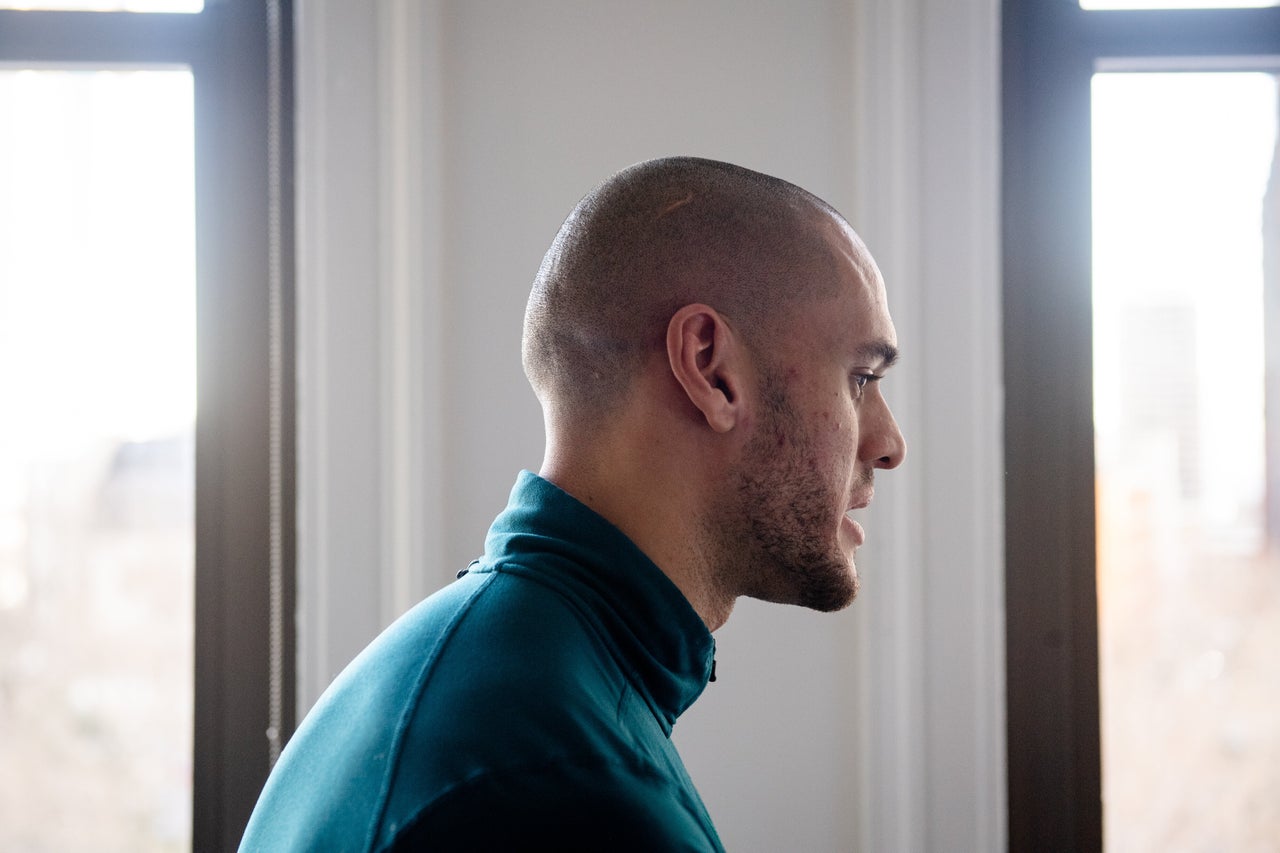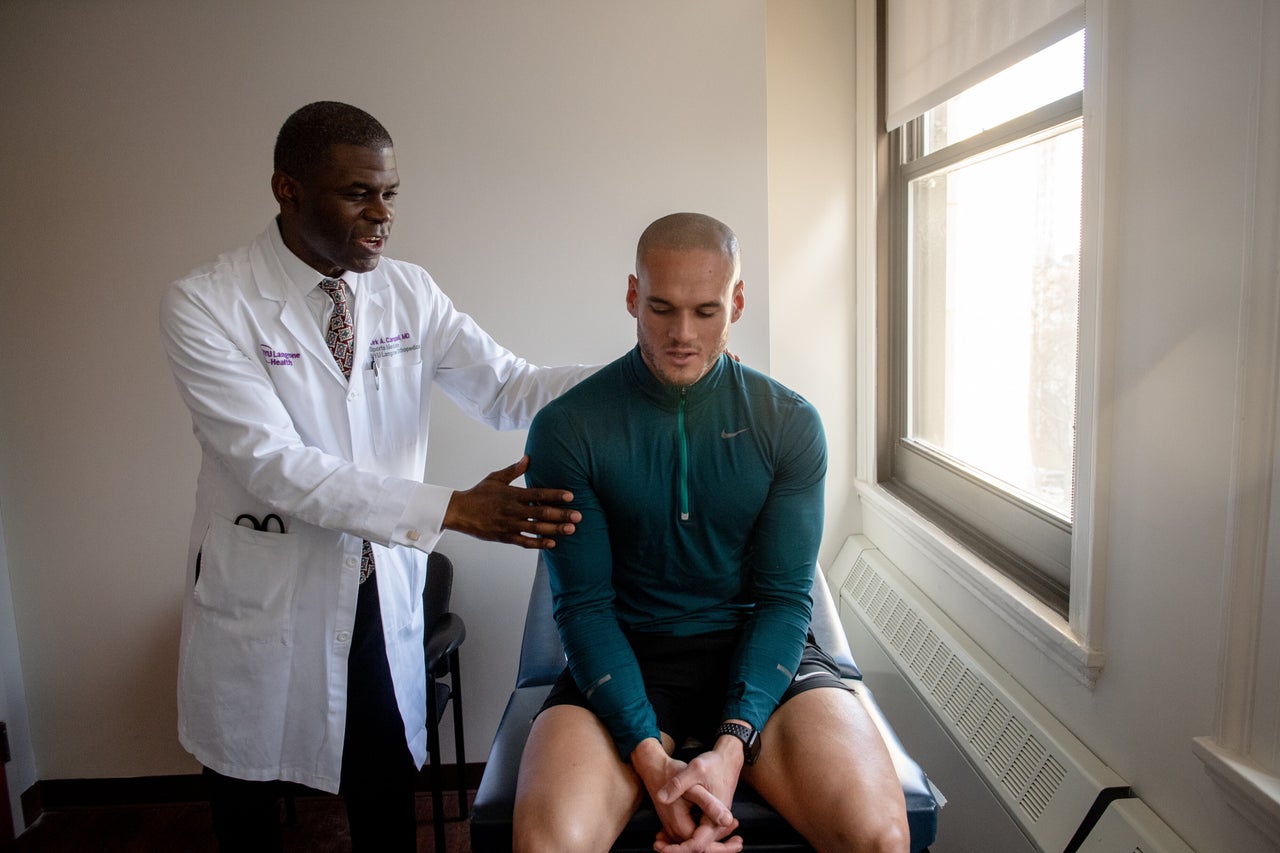This story is part of Pain in America, a nine-part series looking at some of the underlying causes of the opioid addiction crisis and how we treat pain.
When Dane Fischer was facing anterior cruciate ligament surgery last fall, his biggest fear was that it might mean looking for a new career.
Fischer, a 31-year-old personal trainer and former professional athlete, had torn his ACL during a pickup soccer game in a New York City park. To repair the painful injury, he turned to orthopedic surgeon Kirk Campbell at NYU Langone Health. (Disclosure: I also had knee surgery at NYU Langone nine years ago, though I had fewer concerns about a career in athletics.)
Given the injury’s potentially life-altering implications, Fischer wasn’t worried about the medications he might need to manage the post-op pain. But it was on the minds of Campbell and his Langone orthopedic colleagues, who over the past few years have begun confronting the role of hospitals in the opioid epidemic.
They are discovering that it’s possible to effectively replace all or most opioids with non-habit-forming painkillers, lowering the chances their patients could become long-term opioid users. In the process, they are also starting to solve another problem: the unintended flow of opioid pills from hospitals into communities.

Fischer hadn’t thought much about opioid addiction before his ACL injury. But as he and Campbell discussed how much pain he might feel after the surgery and how they’d manage it without an emphasis on opioids, he realized that it could happen to anyone — even him.
“It all starts in the office,” Campbell says, “with letting them know what to expect.”
As part of the reduced-opioid protocol, Fischer was released with a prescription for one oxycodone pill a day, for up to 10 days after surgery, with no refills: just enough to get him to his first follow-up appointment. Instead, the emphasis is on replacing opioids with nonaddictive drugs like acetaminophen (Tylenol) and ibuprofen (Advil).
In a study of 68 patients who had surgery to repair torn meniscus cartilage in the knee, Campbell and colleagues “found no significant difference in pain control, satisfaction, and total 1-week opioid use” between patients prescribed 30 to 40 tablets of combo oxycodone-plus-acetaminophen pills and those with prescriptions for just 10 combo pills and a nonaddictive ibuprofen regime. Another NYU Langone study with shoulder surgery patients had similar results.
While patients were previously going home with 30 to 60 tablets, Campbell said, he and his colleagues are finding that patients fare just as well on the new protocol. Across the department’s roughly 1,800 surgeries annually, that adds up to tens of thousands fewer pills being prescribed for home use.
“All patients used only limited amounts of opioids to control postoperative pain, suggesting we are currently overprescribing opioids,” the researchers concluded.
Cutting Off The Flow From Hospitals
Dr. Charla Fischer, a spine surgery expert and colleague of Campbell’s at NYU Langone’s orthopedics department (and no relation to Dane Fischer), said that most of the time when a person becomes addicted to opioids, it’s not a result of their own medical treatments.
“Through the media coverage of the opioid crisis, and research into opioid addiction, we found that most people began on opioids by using pills not prescribed to them,” she says. “A very low percentage of patients actually took their prescription too much and got addicted. But 90% of the time it was a family member’s, or someone in the household’s, prescription that they got into and they got addicted.”
That’s why part of the goal of their new pain management regime is making sure there aren’t extra prescription pills in circulation.
It’s no longer standard practice at NYU Langone orthopedics to give patients opioid refills without seeing them first, which gives the doctors a chance to figure out why they’re asking for more — whether it’s due to ongoing pain or because a patient is becoming dependent, and whether a treatment other than painkillers can help.
“Sometimes you do need opioids,” Fischer said, “but we’re looking at alternative methods” such as breathing exercises or acupuncture. “In my opinion, I think that’s a better, more holistic way of treating pain than just giving someone opioids.”
Dr. Eric Chiang, an anesthesiologist with the Cleveland Clinic, agrees. In early 2018, he spearheaded a 1,600-patient pilot program at the Cleveland Clinic’s Fairview Hospital, where doctors deliver over 5,000 babies a year, to test the impact on pain management of reducing the amount of opioids cesarean section patients received.
The standard medical practice had been to give patients Percocet immediately after a C-section, and to send them home with around 30 pills. Patients in the pilot program got no opioid painkiller during surgery, and afterward received the maximum dose of Tylenol every six hours, along with some ibuprofen. Patients could ask for Percocet to control breakthrough pain, but otherwise it was not offered. The standard amount they were sent home with was reduced to 21 pills.
“You’re basically returning choice to the patient,” said Chiang. “We trusted the patients would do the right thing.”
Opioid use after C-sections at Fairview plummeted by 70% within the first month, and the number of patients who never needed any opioids at all shot up from 12% to 51%. By mid-2019, C-section patients who did use opioids were discharged with around 12 pills, and by the end of the year that number was down to three to five pills. If a patient hasn’t received opioids in the hospital, she’s sent home with no opioid prescription at all.
Nationally, around 6% of patients who are exposed to opioids for the first time during surgery become long-term users later on. “That makes opioid addiction the number-one post-surgery complication,” said Chiang. “We wouldn’t accept that for, say, infections.”
The Cleveland Clinic has now implemented the new C-section protocol across its entire system, and is now working to reduce opioids across all surgeries. Chiang said the new protocol has had other benefits for patients, including decreased nausea and less time spent in the recovery room. For C-section patients, that can translate to an easier transition to parenthood.
“They’re getting out of bed sooner, their return to normal bowel function is probably sooner,” said Ken Rao, director of obstetrics and gynecology at the Cleveland Clinic’s Hillcrest Hospital. Patients also report less postnatal depression and better bonding with their new babies.
Changing The Culture
Low-opioid pain management programs, sometimes termed “enhanced recovery after surgery” protocols, have taken off at hospitals around the country. A few date back years, such as the protocols University of Virginia Health System colorectal surgeon Traci Hedrick first developed in 2013.
During an initial study involving 100 patients, Hedrick and colleagues soon discovered that it was possible to cut opioid consumption by 80% in favor of nonaddictive alternatives, without increasing patients’ discomfort. The overall length of hospital stays decreased by 2.5 days, while surgical complications dropped by 30% to 40%.
The results were so striking, Hedrick says, that the protocol was soon expanded to all colorectal surgery patients. It is now used throughout the UVA system, where doctors do more than 8,000 surgeries a year.
But there seem to be many surgeons who are still overprescribing. According to a 2019 analysis of Medicare data by the Johns Hopkins School of Public Health and Kaiser Health News, from 2011 through 2016, thousands of surgeons sent patients home with prescriptions for dozens of opioid pills, sometimes more than 100, even for surgeries unlikely to cause much postoperative pain.

Sometimes patients can drive the change, said NYU Langone’s Charla Fischer. “The media’s coverage of opioid use has changed a lot for me as a provider,” she said. “Now patients are saying, ‘I don’t want opioids. How do I avoid opioids?’ They want to manage the pain but don’t want to just pop a pill.”
Chiang points out that the opioid addiction crisis exists only in the United States, which is home to about 4% of the world’s population but consumes 80% of the world’s opioid supply.
“Not only with C-sections, but with all surgeries, we’re treating with too much opioid pain medicine, and discharging with too much opioid pain medicine,” Chiang said. “We’re trying to find a solution for it. It really needs to be a multidisciplinary effort of changing the culture of both our patients and ourselves.”
Dane Fischer considers himself a convert. He believes that Dr. Campbell’s four-week “pre-hab” conditioning program before surgery, combined with very limited oxycodone afterward — just one pill a day for 5-10 days — both controlled his pain and improved his recovery.
“I never thought about painkillers before this surgery,” Fischer says, but “by six weeks post-op, there’s no pain.” His ACL is healing well, and his fears for his fitness trainer career have almost vanished.
Although NYU Langone is still collecting data about how much impact low-to-no opioid protocols are having on solving the opioid crisis, Campbell says the change has been clear. “We’re being better stewards of the narcotics we’re prescribing,” he said.
Need help with substance use disorder or mental health issues? In the U.S., call 800-662-HELP (4357) for the SAMHSA National Helpline.
CORRECTION: A previous version of this story incorrectly identified acetaminophen as a nonsteroidal anti-inflammatory drug.
